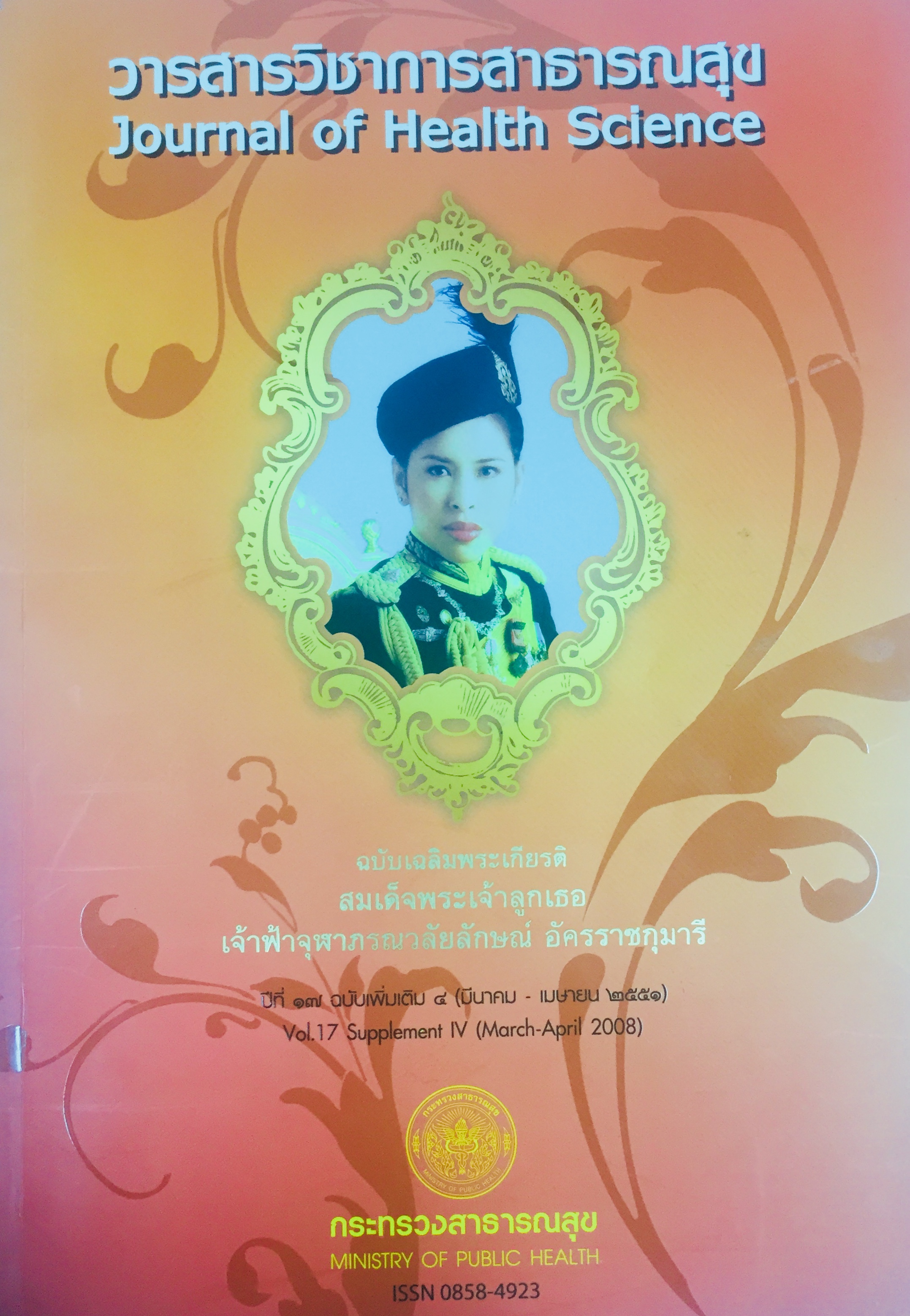Relationships between Using Inhaled Corticosteroid and Asthma Control and Exacerbation in Pediatric Asthma Clinic in Chachoengsao Hospital
Keywords:
pediatric asthma, inhaled corticosteroid, inhalation technique, drug adherence, asthma control, exacerbationAbstract
The purpose of this retrospective descriptive-analytic study was to evaluate the use of inhaled corticosteroid and asthma control and exacerbation in pediatric asthma clinic in Chachoengsao hospital. In all 191 patients diagnosed of persistent asthma during 4 year period from April 2004 to March 2008 were included. There were 120 male and 71 female patients aged range from 9 months to 14 years 5 months, mostly in the two age groups of above 1 year to 5 years (45.0%) and above 5 years to 10 years (40.3%). A total of 88.5 percent of the patients were prescribed inhaled corticosteroids for 2 months to 5 years 1 month. The most preferred type of prescribed inhaled drug was metered-dose inhaler with spacer (70.4%). The symptoms among the patients using inhaled corticosteroid were under control (45.6%), partly controlled (44.9%), uncontrolled (9.5%) and had exacerbations (47.3%). There were significant relationships between correct inhalation technique, drug adherence and good asthma control (OR = 9.12, p = 0.001, 95% CI 2.04, 40.70 and OR = 23.73, p = 0.001, 95% CI 7.99, 70.39, respectively) with reducing exacerbation of asthma (OR = 7.74, p = 0.001, 95% CI 2.17, 27.53 and OR = 12.66, p= 0.001, 95% CI 5.57, 28.75, respectively). It is important to monitor patientีs inhalation technique and drug adherence in every visit, especially when they have uncontrolled asthma or frequent exacerbations.
Downloads
Downloads
Published
How to Cite
Issue
Section
License
Copyright (c) 2018 Journal of Health Science

This work is licensed under a Creative Commons Attribution-NonCommercial-NoDerivatives 4.0 International License.







